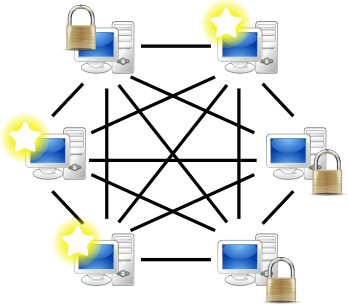Exchange strategies
Exchange partners may change requirements specifications concurrently, and need to apply proper conflict resolution to ensure that the system as a whole settles down into a consistent state. Before an exchange between partners can take place, partners must agree on an update strategy. Two strategies can be distinguished: atomic updates and concurrent updates.
Atomic update strategy
The atomic update strategy (rotating master) allows a single partner to perform changes to the requirement specifications. All other partners keep the specifications frozen until one of them receives a snapshot and is then authorized to perform changes. This strategy relies on the consistency of a single-copy and avoids the occurrence of conflicts. However, this strategy does not scale up: as the number of partners increases, so does the time required to synchronize replicas at all partner sites.
Figure 115. Rotating master

Concurrent update strategy
The concurrent update strategy (multi-master) allows all partners to update requirement specifications concurrently. One or more partners may hold so-called primary copies, with which other partners can synchronize to. A concurrent update strategy offers scalability and flexibility, but requires that partners devise an exchange plan to ensure timely convergence of specifications at all partner locations.
Figure 116. Multi-master

Parent topic